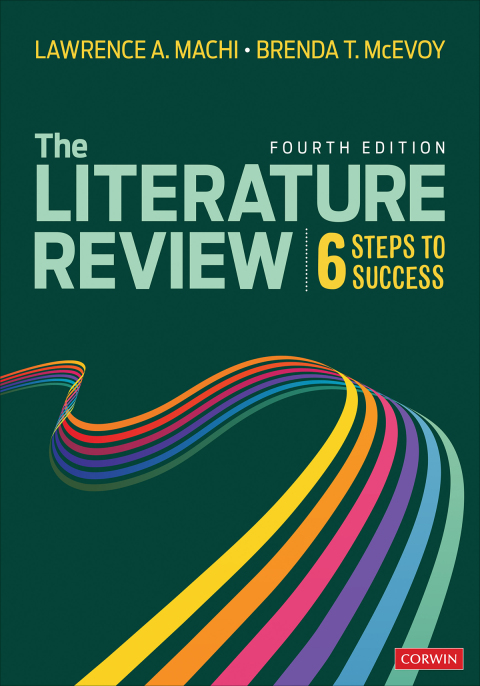Description
Efnisyfirlit
- Literature Review Flow Chart
- Preface
- New to This Edition
- Audience
- Special Features and Text Organization
- Acknowledgments
- About the Authors
- Introduction: Doing and Producing a Literature Review
- Key Vocabulary
- Introduction Overview
- The Purpose of a Literature Review
- The Literature Review Defined
- The Literature Review Process
- Mindset: Personal Dispositions on Thinking, Doing, and Deciding
- The Ethics of Reviewing the Literature
- Reflective Oversight
- Plan Wisely Before You Begin
- Summary
- Checklist
- Reflective Exercise
- 1. Step 1: Select and Define a Topic
- Key Vocabulary
- Chapter Overview
- Task 1. Identify a Subject for Study
- Task 2. Translate the Personal Interest or Concern Into a Research Query
- Task 3. Link the Research Query to the Appropriate Discipline
- Task 4. Write the Preliminary Research Topic Statement
- Summary
- Checklist
- Reflective Exercise
- 2. Step 2: Develop the Tools of Argumentation
- Key Vocabulary
- Chapter Overview
- Concept 1. Building the Case for a Literature Review
- Concept 2. Arguments—the Basics
- Concept 3. Evaluating the Basic Parts of an Argument
- Concept 4. Understanding Claims
- Concept 5. Building Evidence
- Concept 6. Warrant—Logically Connecting the Evidence to the Claim
- Concept 7. Complex Claims
- Summary
- Checklist
- Reflective Exercise
- 3. Step 3: Search the Literature
- Key Vocabulary
- Chapter Overview
- Task 1. Select the Literature to Review
- Task 2. Conduct a Literature Search
- Task 3. Refine Your Topic
- Summary
- Checklist
- Reflective Exercise
- 4. Step 4: Survey the Literature
- Key Vocabulary
- Chapter Overview
- Task 1. Assemble the Collected Data
- Task 2. Organize the Information
- Task 3. Analyze the Patterns of Data
- Summary
- Checklist
- Reflective Exercise
- 5. Step 5: Critique the Literature
- Key Vocabulary
- Chapter Overview
- What Is a Literature Critique?
- Concept 1. Making the Case for the Literature Review
- Concept 2. Descriptive Argument Patterns: Factual Reasoning
- Concept 3. Implicative Argument Patterns: Implicative Reasoning
- Concept 4. The Implicative Argument: Nine Basic Patterns
- Concept 5. Backing
- Doing a Critique of the Literature: Building the Advocacy Argument
- Task 1. Determining the Implicative Logic Pattern Inferred by the Topic of Study
- Task 2. Reframe Claims to Meet the Prerequisite Conditions Identified by the Selected Logic Type
- Task 3. Build the Advocacy Argument
- Concept 6. Fallacies
- Concept 7. The Case Is Everything
- Summary
- Checklist
- Reflective Exercise
- 6. Step 6: Write the Review
- Key Vocabulary
- The Writing Process: Overview
- Task 1. Write to Understand
- Task 2. Write to Be Understood
- Style Manuals
- Checklist
- Reflective Exercise
- Last Words
- Supplements
- Supplement A The Role of the Literature Review
- Supplement B Literature Review 101
- Supplement C Writing a Journal
- Supplement D SQRRR
- Glossary
- References and Further Reading
- Index






Reviews
There are no reviews yet.